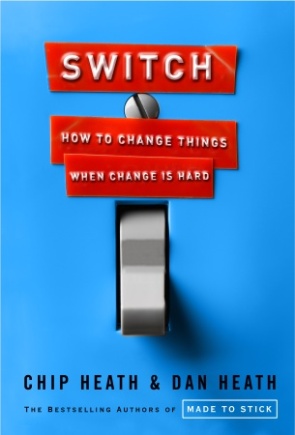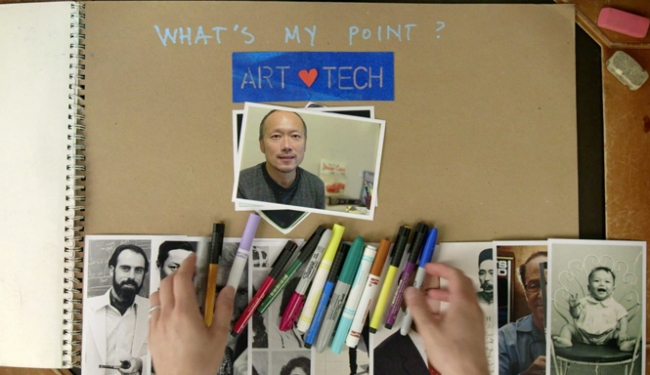Ever since I got introduced to the concept of Design Thinking, I had this feeling that this could be a game changer for how business innovation is done. In a nutshell, because it starts with the customer as sole for finding innovations.
This may be obvious for anyone knowing about Design Thinking fundamentals, but it may be not fully true for people coming from a Business Thinking background, where the norm is how opportunities are projected to make money, not how it will solve a customer problem.
I will try in this blog post to bridge both worlds and suggest a framework for change when it comes to innovation. How can we introduce Design Thinking in a seamless manner in current today Business Thinking.
What is wrong with the traditional business thinking approach when it comes to innovation?
The problem here is that with current traditional business thinking we have in most of big organizations, management are always insisting you have all the financial stuff figured out before taking any deciding decision.
This may be valid for predictable evolutionary type of innovation opportunities where you can anticipate, but for me it did not make any sense for uncertain and still unknown innovation opportunities, but this was what Business Thinking have always implied.
One nice quote about business thinking that summarize how it structure its thinking:
“Business schools tend to focus on inductive thinking (based on directly observable facts) and deductive thinking (logic and analysis, typically based on past evidence), …”, Proctor & Gamble CEO A.G. Lafley
As you can see, its a school where its starts from old patterns and try to justify everything based on facts and figures.
Design Thinking, a different approach ...
For me innovation is always about finding a quantifiable gain as an enterprise but for this to happen a value need to be created for the intended receiver.
What we have been missing in our traditional business thinking is to get "real" customer insights that could drive the exploration of new and unique opportunities for innovation. This is where Design Thinking comes to play.
Design thinking is all about immersing in the customer world and trying to find the frustrations, problems and unarticulated needs that could open the door for a whole set of "will be adopted" opportunities.
“Design schools emphasize abductive thinking—imagining what could be possible. This new thinking approach helps us challenge assumed constraints and add to ideas, versus discouraging them.”, Proctor & Gamble CEO A.G. Lafley
As you can see from the quote, Design Thinking is a constructive way to find new opportunities, where you have a certain goal and you try to learn your way till you reach it, its a postcard for better future!
Business Thinking meets Design Thinking, a frame for change ...
The question then arise, how can we make design thinking more appealing to the business world? How can we make it more quantifiable for those Excel savvy's?
This is why I will try to propose a simple framework that could incorporate Design Thinking in our everyday Business Thinking!
This framework for change builds on a very nice change framework I had read about in the book "Switch, How to change things when change is hard" by Chip Heath and Dan Heath.
In this book, the authors introduced a very easy and pragmatic framework for change that can be used in many contexts. The framework states that there THREE steps to make any change happen:
- Direct The Rider, lack of clarity often leads to resistance, so we need to provide crystal clear direction to get everyone's on board. This is why we need to avoid over analyzing our Design Thinking efforts and for that to happen, we need to make Design Thinking integrate as 1-2-3 crystal clear process and show people what they will get!
- Motivate The Elephant, it's important to engage people at the emotional level to get there support. This is very important to fuel the support and the wellness to make the change. Think of this as someone who work for a cause, the fuel of making an impact generate the energy to continue the journey. This is what we need to add to everyday Business Thinking.
- Set The Path, to change someone's behavior, you have to change the situation surrounding him / her. For example, to let people eat less popcorn in the movies, all we need to do is to give them smaller containers, thats it! What looks people problem is often a situation problem. This is why changing the context and surroundings would help people to change for the what we are pushing for, in general.
I will try to use this framework to build a clear direction on incorporating Design Thinking into Business Thinking, so bear with me :)
"Besign Thinking", the essentials!
Quick note: Besign Thinking, this is not an spelling error by the way. It's by intention.
Using this simple framework above, I will try build a pragmatic version that can be used to "Enhance" the current business thinking about innovation for the better.
The main objective is to find a way to mix Design Thinking with Business Thinking, which in the end yields for a better results when it comes to pursuing innovation. But this have to happen in an easy and easy going manner to avoid any hard resistance that may cause a hult down for this initiative.
Step 1 || Direct The Rider
Set clear goals from customer point of view:
Although it may be a an obvious thing to be done, but setting goals where the customer value is mentioned along side the enterprise value can make the big difference.
For example: we can state in our opportunity goal that we are going to make 100 Million in five years, but also adding that we are going to have a clear change the customer situation, let be having less or no queue times at our outlet with our upcoming mobile payment solution. Stating clearly what are the current customer frustrations or unarticulated needs and build on that.- Describe the steps that will affect the customer:
When trying to incorporate Design Thinking in your regular business thinking process, make sure that you clearly specify the additional steps to be taken when you add the Design Thinking flavor. The less the additions in the beginning the better to avoid the resistance!For example: We shall start with an initial business case, following that shall add customer feedback as step to validate our assumptions after words we shall craft the final (usual) full fledge business case… Etc. Show success stories:
Executives always love success stories. If it worked somewhere, then the probability that it works with them is much higher (A number game!). Try to show success stories but add to that the customer view, what have been solved and how their lifestyle have changed to be better and do not forget the numbers!
Example: company x in our field have managed to make 10 Million $ in one year. Not that only, but the customers experience and expectations have raised which yielded in to 20% increase in the brand value. This all because they started with the customers and ended with them.Use their terminology:
One thing that can reduce the changes and make it more easier, is to use existing regular business terminologies to avoid any extreme resistance and to make change as a familiar thing.
Example: instead of saying that you shall do an immersive research, our putting yourself in the customer's shoes and do a user shadowing! Simply say that we shall extend our primary research to get more information about our customers (period!).
Step 2 || Motivate The Elephant
Craft a story:
Everyone love stories, so use them as a weapon for you. Start your business case or presentation with a 2 min story where you show the future and describe how this opportunity will change the customers life and how it will make a quantifiable gain for your company from that.
I would highly recommend to watch this short movie, titled: “The Fiction of the Science” which tells you how valuable is storytelling for crafting a future vision.Add emotions by adding real customers pictures:
All most every presentation in the business world contains those smiley people with the shinny teeth (where you can find them in iStockPhoto or something similar).
Although, optimism is good. I would say that if you put real customers photos (from real life) declaring their real frustrations, showing how they are struggling that may have deeper impact on the executives that are packing your initiative.
Step 3 || Set The Path
Tweak your presentations:
Embrace the design part of the Design Thinking. Try to make your presentations fancier so they can feel the change. We all hate those enterprise templates that we use for our presentations, but to make the change obvious, you have to do something new. This may seems weird for some in the beginning from others, but with time they will get used to it.Include everyone, at every step:
When you are doing your Design Thinking stuff, make sure to show the people each step and include them in it. Be it a design research, ideation or prototyping. This way, you will pave the way for a change in attitudes that could be crucial later.
At the end, try to make what ever changes you have done as regular thing. Make it a habit!
One More Thing, What's Dilbert View On Business Thinking?
At the end …
Both Design Thinking and Business Thinking are both sides of the same coin. What we need to do is make every one of them appeal to the other, and this as the purpose of my post.
Hope you like it, and kindly feel free to criticize or complement what I have said. Its good to have other views to make the picture even better.
One last thing, If you have implemented any or all of the guidelines above, I will be more than happy to hear your story, comment it please :)


